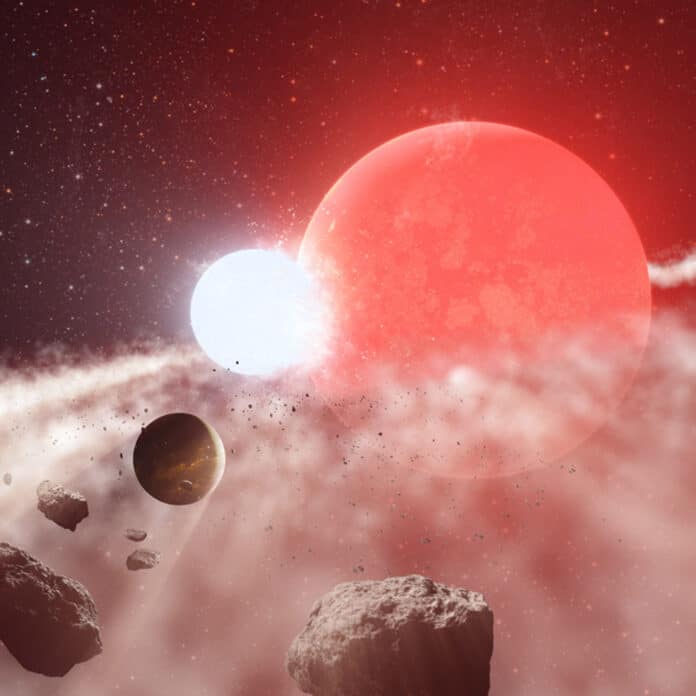When main-sequence stars expand into red giants, they are expected to engulf close-in planets. Until now, the absence of planets with short orbital periods around post-expansion, core-helium-burning red giants has been interpreted as evidence that short-period planets around Sun-like stars do not survive the giant expansion phase of their host stars.
Astronomers from the University of Hawaiʻi Institute for Astronomy (IfA) have discovered a planet’s survival after what should have been a certain demise at the hands of its Sun.
Officially known as Halla, the Jupiter-like planet 8 UMi b orbits the red giant star Baekdu (8 UMi) at a distance that is only half that between the Earth and the Sun. Using the W. M. Keck Observatory and Canada-France-Hawaii Telescope (CFHT), two Maunakea Observatories on Hawaii Island, a team of astronomers led by Marc Hon, a NASA Hubble Fellow at IfA, found that Halla endures despite the often dangerous evolution of Baekdu.
They discovered that Baekdu is burning helium in its core, indicating it has already experienced massive expansion into a red giant star. They discovered this using studies of Baekdu’s stellar oscillations from NASA’s Transiting Exoplanet Survey Satellite.
Before contracting to its current size at just one-tenth of that distance, the star would have blown up to 1.5 times farther than the planet’s orbital distance, engulfing the planet in the process.
The planet Halla resembles “warm” or “hot” Jupiter-like planets that are assumed to have started on broader orbits before migrating inward close to their stars at a distance of 0.46 astronomical units (A.U., or the Earth-Sun distance) from their star. Such an origin, however, turns out to be an incredibly implausible survival pathway for planet Halla in the face of a host star that is fast developing.
The notion that the planet was never in danger of being engulfed is another explanation for its survival. According to the team, the host star Baekdu may have formerly been two stars, like the well-known planet Tatooine from Star Wars, which revolves around two suns. It’s possible that a star merger between these two would have stopped any one of them from becoming large enough to swallow the planet.
The third possibility is that Halla is quite young and that the two stars’ violent collision created the gas cloud that gave rise to the planet. In other words, the planet Halla might be a “second generation” planet that has just formed.
Journal reference:
- Hon, M., Huber, D., Rui, N.Z. et al. A close-in giant planet escapes engulfment by its star. Nature 618, 917–920 (2023). DOI: 10.1038/s41586-023-06029-0
